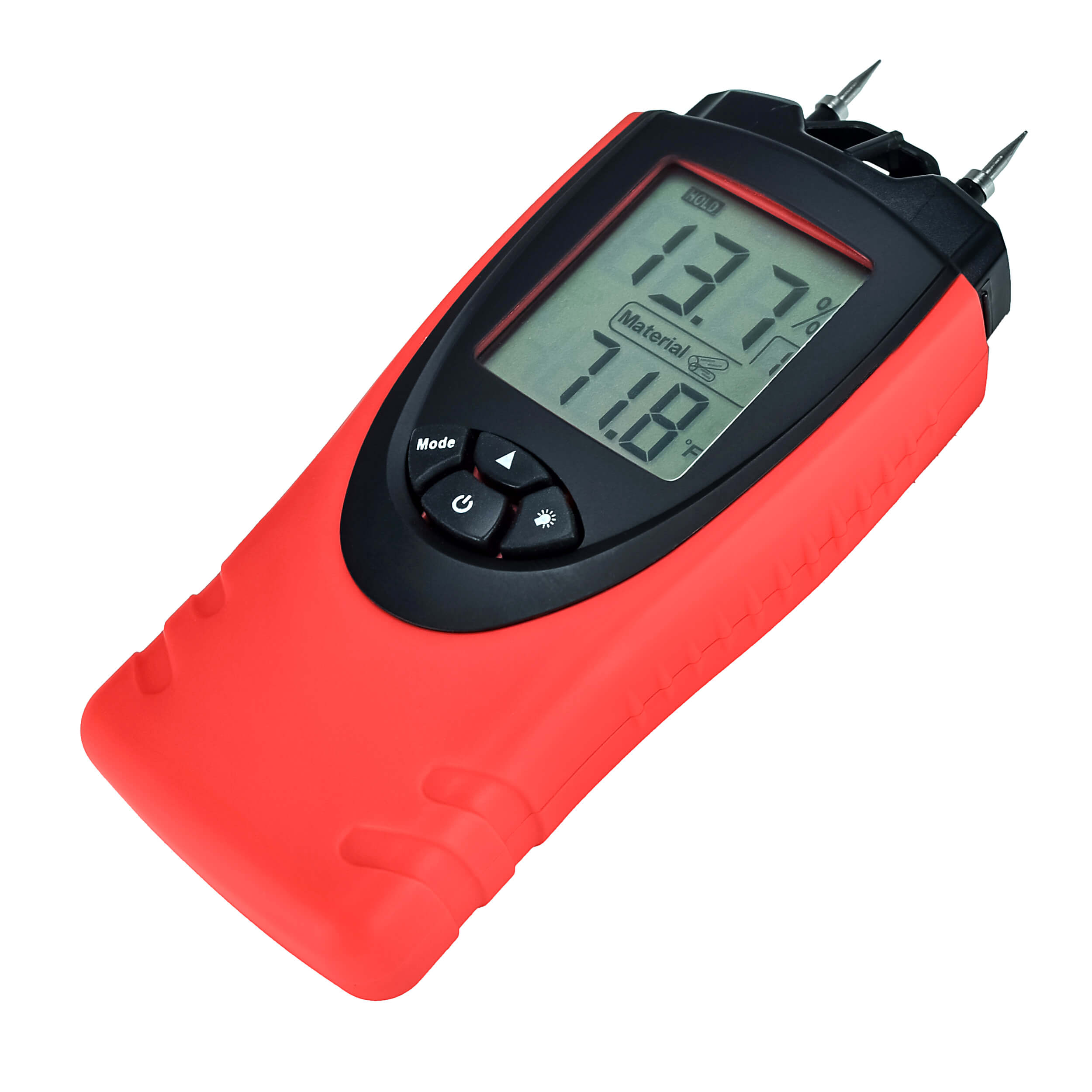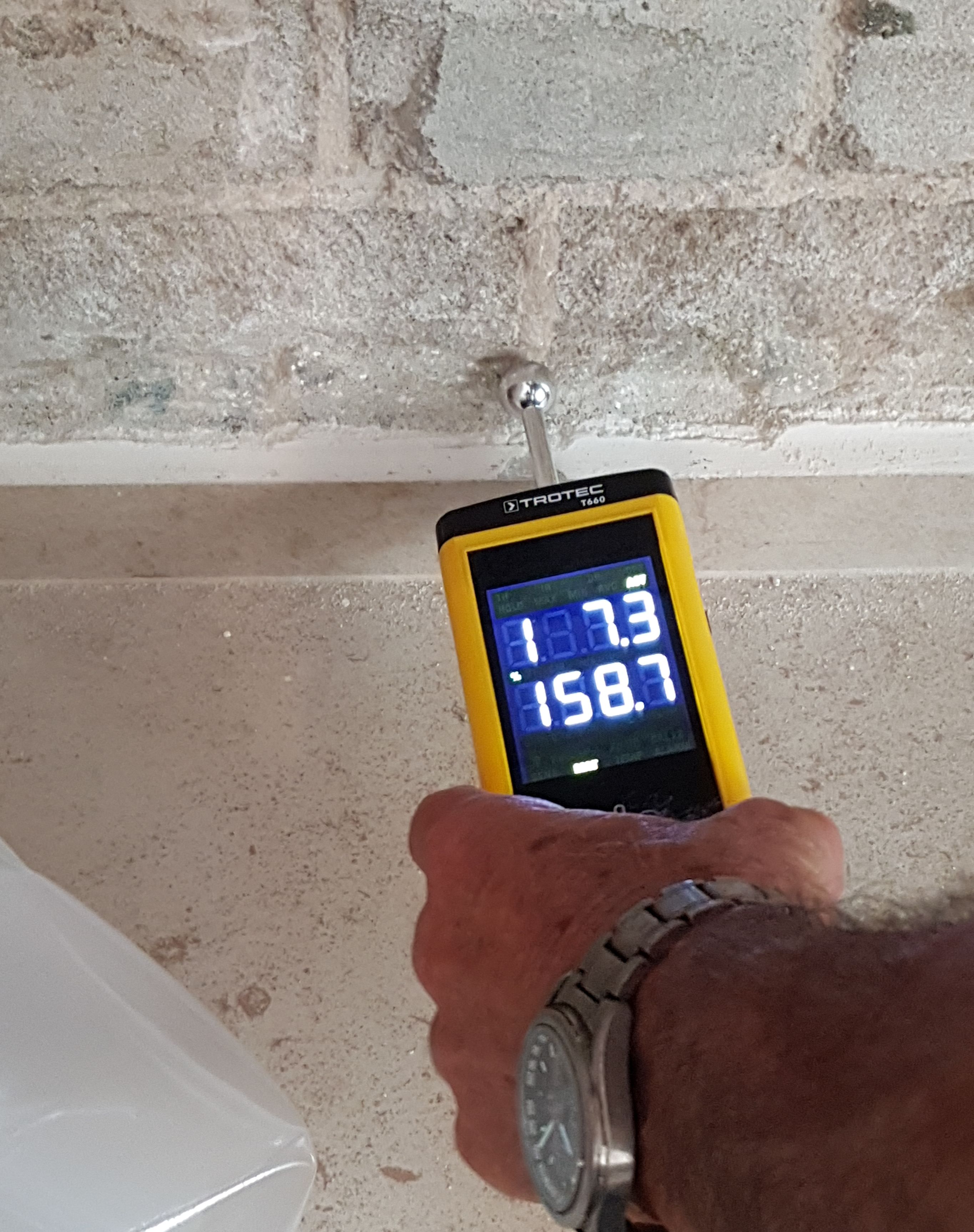Moisture Meter Acquiring Guide: What to Look for in High-Quality Instruments
Moisture Meter Acquiring Guide: What to Look for in High-Quality Instruments
Blog Article
Look Into the World of Moisture Meters: Whatever You Need to Know
In the realm of moisture meters exists a world of precision and usefulness that often goes unnoticed. These gadgets, while relatively uncomplicated, hold a riches of information that can considerably impact numerous industries and applications. Understanding just how moisture meters run, the various kinds available, and their diverse uses can shed light on their value in making sure top quality and efficiency. By exploring the ins and outs of moisture meters, one can uncover an important device that goes beyond mere dimension, using insights that can make a substantial distinction in countless areas.
Just How Moisture Meters Work
Moisture meters run by measuring the electric conductivity or capacitance of products to determine the dampness web content existing. These meters are important tools throughout different markets, including farming, construction, and woodworking. By making use of different methods such as pin-type or pinless technology, moisture meters give accurate readings that help specialists make informed decisions.
Pin-type moisture meters work by placing the sharp pins right into the material being tested. On the other hand, pinless moisture meters utilize electro-magnetic signals to scan a larger area without triggering any kind of damage to the product's surface.
No matter the approach utilized, moisture meters play a crucial role in preventing issues such as mold and mildew development, structural damages, or product defects created by excess moisture. Recognizing exactly how these meters job is crucial for ensuring the quality and integrity of materials in various applications.
Sorts Of Moisture Meters
Offered the critical role moisture meters play in numerous industries, it is vital to recognize the various types available to professionals for accurately evaluating wetness degrees - Moisture Meter. There are mainly 2 major kinds of wetness meters: pin-type and pinless dampness meters

On the other hand, pinless moisture meters make use of electromagnetic sensor plates to check a bigger area of the product without causing any type of damage. This type is suitable for swiftly scanning large areas and is frequently used for flooring, wall surfaces, and ceilings. Pinless meters are convenient for taking readings on completed surface areas without leaving any visible marks.
Both sorts of dampness meters have their advantages and are selected based upon the details needs of the work handy. Comprehending the differences in between these types is critical for professionals to make accurate moisture evaluations.
Applications Throughout Industries
With varied capabilities, moisture meters find widespread application across various sectors, assisting experts in guaranteeing optimum conditions for products and structures. In the agriculture field, wetness meters are invaluable for determining the dampness web content in grains, seeds, and pop over to this site hay, making certain quality assurance and avoiding mold and mildew growth. Building professionals count on dampness meters to assess the wetness degrees in structure products like concrete, wood, and drywall, which is crucial for maintaining architectural integrity and avoiding problems like rot or mold. The flooring industry uses dampness meters to gauge the moisture web content in subfloors prior to setting up numerous flooring treatments, avoiding pricey damages as a result of excess dampness. Moreover, in the food industry, moisture meters are utilized to keep track of and regulate moisture levels in products such as grains, nuts, and dried out fruits to maintain freshness and high quality. In addition, dampness meters play an essential duty in the reconstruction and damages analysis industry by helping specialists attend to and recognize water damages in buildings promptly. Across these varied industries, dampness meters are vital tools for guaranteeing the high quality, security, and longevity of numerous products and products.
Tips for Using Wetness Meters
Make use of the moisture meter's calibration settings to make certain precise analyses when determining the wetness content in numerous products. In addition, make sure the meter is established to the correct wetness range for the product you are determining to acquire the most accurate results.
When utilizing a pin-type dampness meter, put the pins to the proper deepness advised for the product being checked. This image source guarantees that the moisture readings are taken from the right depth within the material, offering a much more accurate representation of its wetness content. For pinless moisture meters, remember to preserve proper contact with the product's surface area to get dependable readings.
Consistently examine and replace the batteries in your moisture meter to protect against incorrect analyses due to low power. Shop the meter in a dry and safe place when not being used to lengthen its life-span and preserve its accuracy. By complying with these ideas, you can take full advantage of the performance of your wetness meter and get exact wetness content measurements throughout various products.
Upkeep and Calibration
To guarantee the precision of dampness content measurements, routine maintenance and calibration of the dampness meter are essential actions in its appropriate performance. Maintenance includes maintaining the dampness meter totally free and clean from debris that could influence its readings. It is necessary to follow the manufacturer's standards for cleaning to avoid damages to the tool. Furthermore, routine calibration is needed review to confirm the precision of the readings. Calibration readjusts the wetness meter to make certain that it provides trusted and constant results.
Calibration must be performed occasionally, specifically if the wetness meter is used often or in important applications where accurate measurements are required. By preserving and calibrating the moisture meter routinely, customers can trust the accuracy of the wetness material dimensions acquired.
Verdict

To conclude, moisture meters play an essential duty in different markets by precisely measuring the wetness web content of products. Comprehending how these gadgets work, the various kinds offered, and appropriate upkeep and calibration are vital for obtaining reputable results. Whether in farming, construction, or manufacturing, making use of moisture meters aids ensure quality assurance and efficiency in processes.

In final thought, dampness meters play an essential function in different sectors by accurately gauging the dampness material of materials.
Report this page